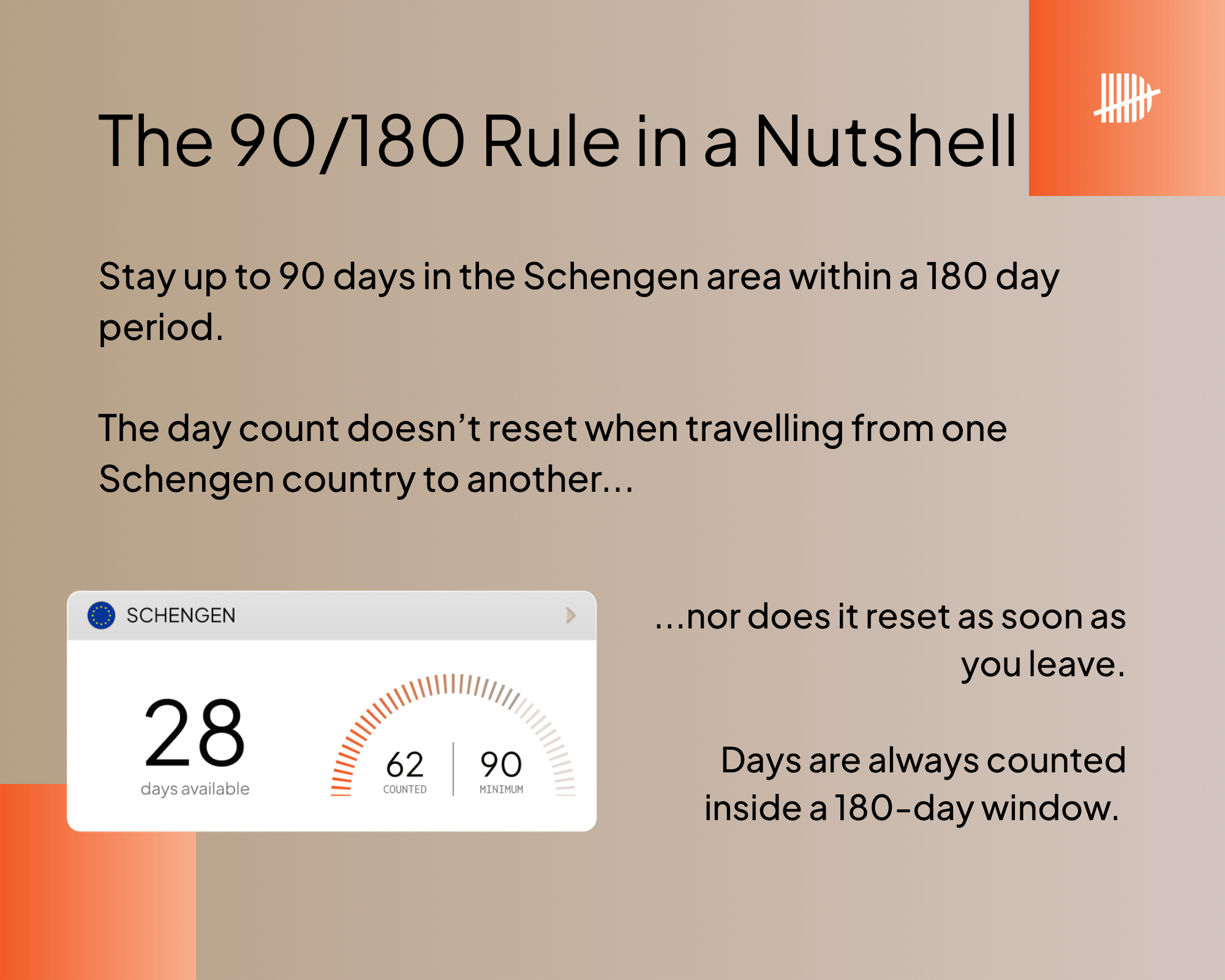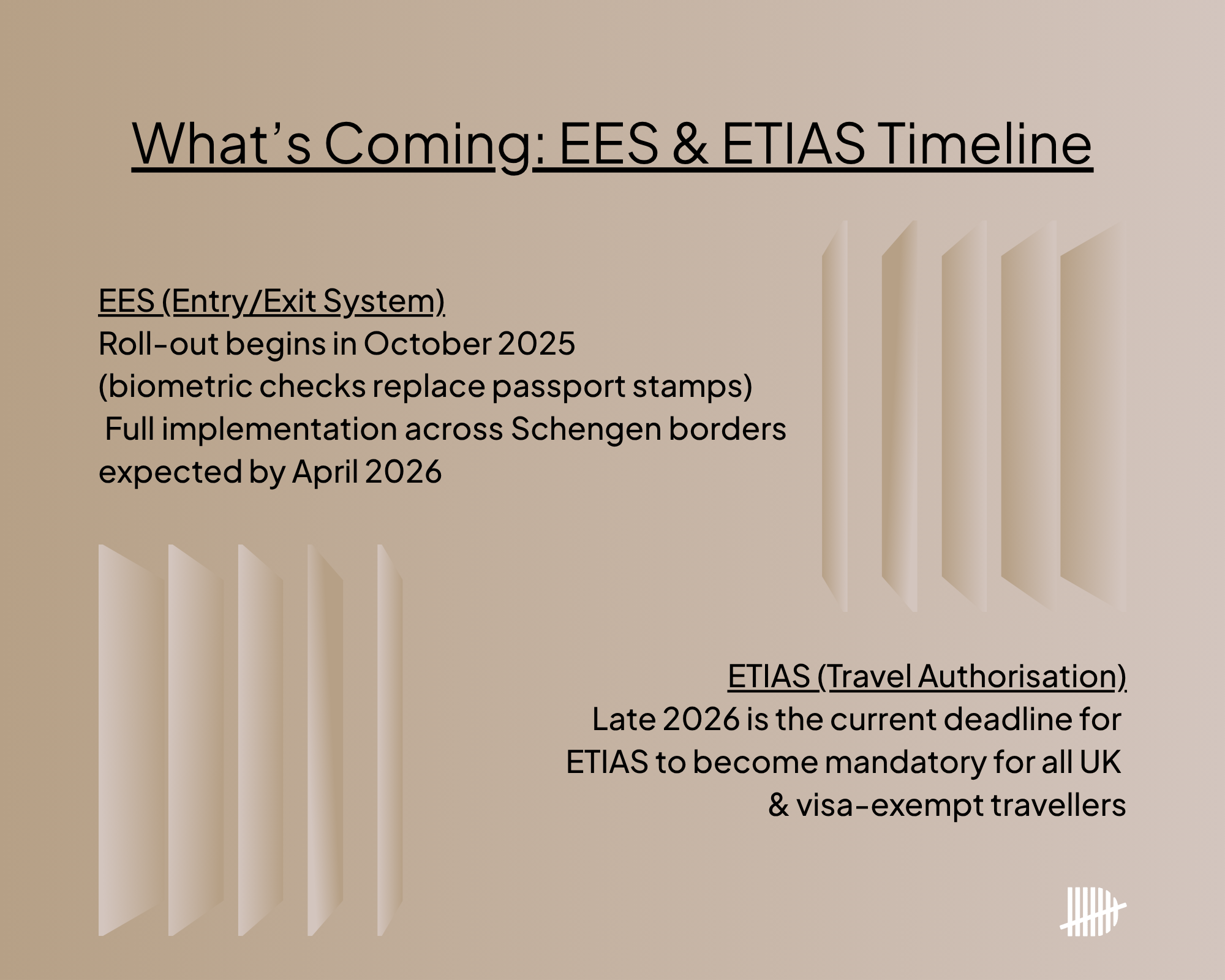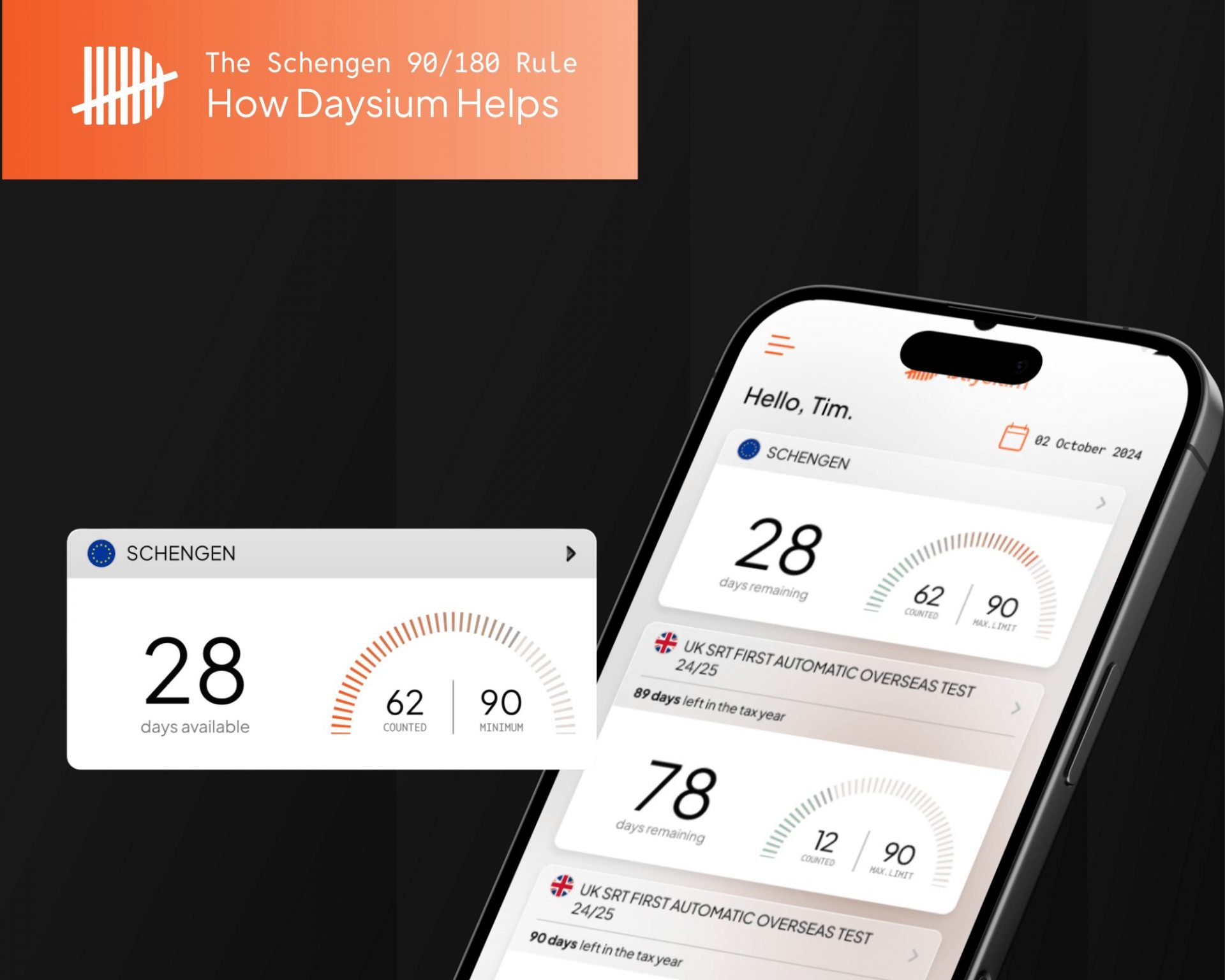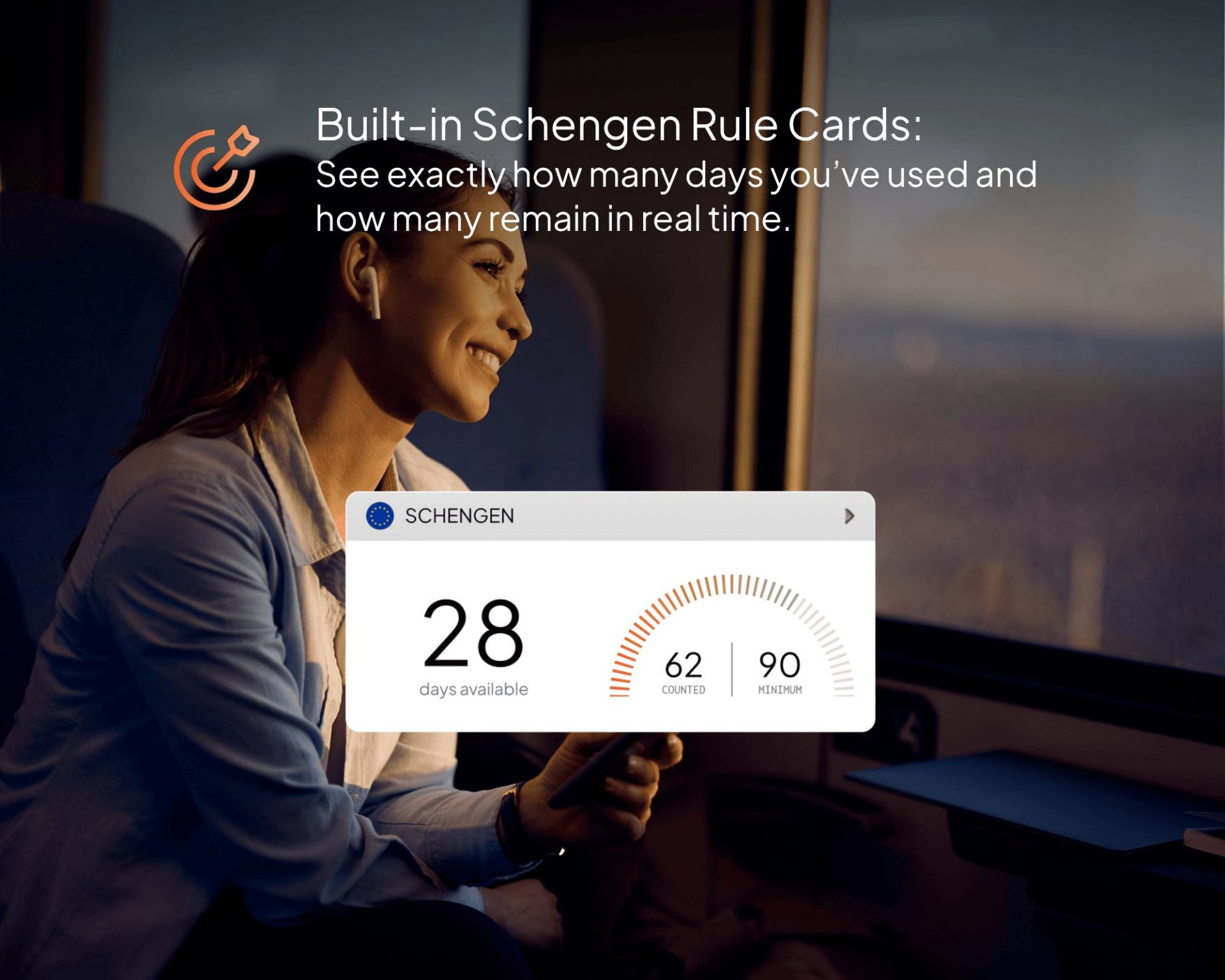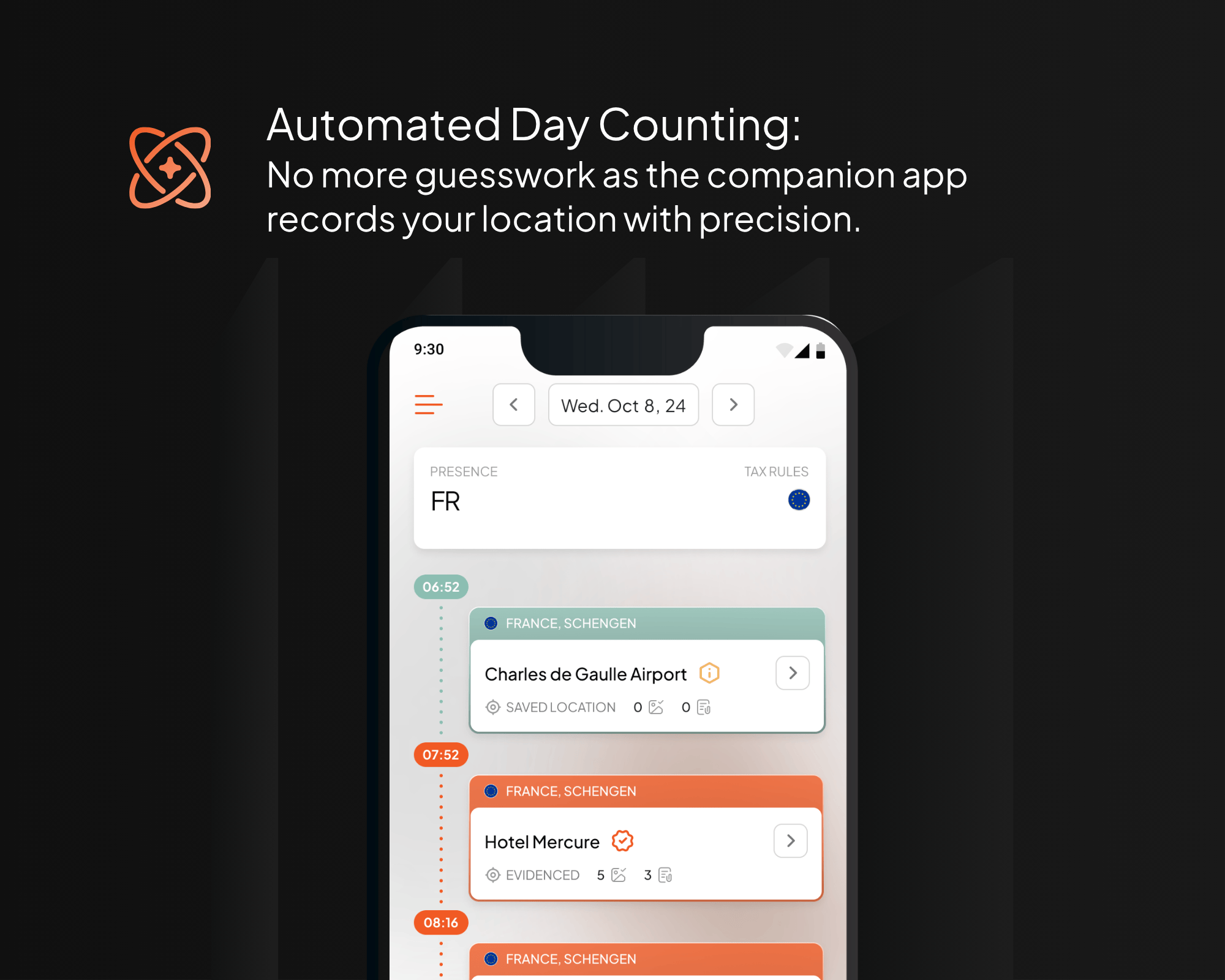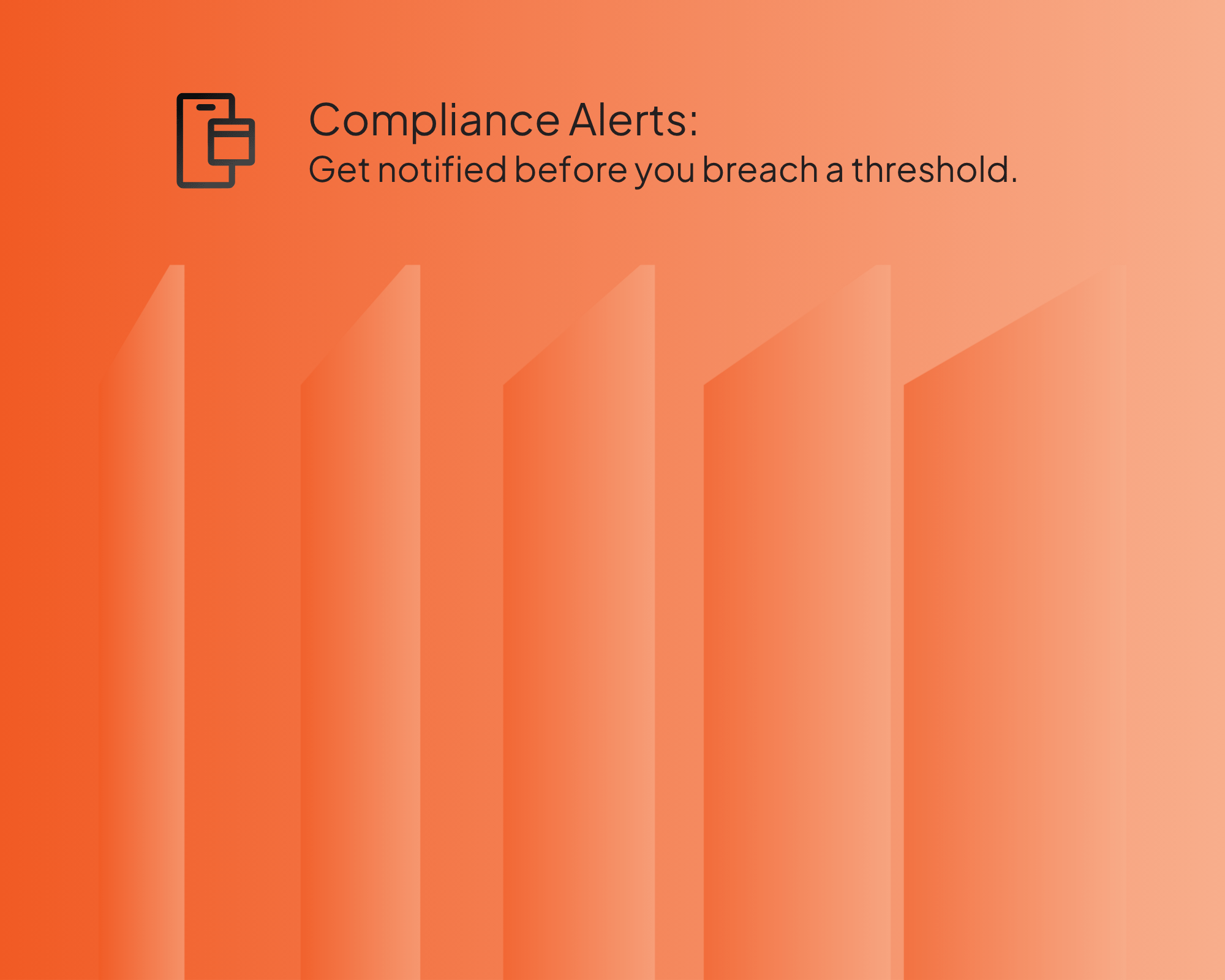The EU Citizens’ Rights Directive (2004/38/EC) allows certain non-EU family members (such as spouses, dependent children under 21, and dependent parents) to accompany or join their EU citizen family member when that EU citizen is exercising their right to free movement.
In these cases, the non-EU family member’s entry and residence are governed by EU free-movement rights in the host country, rather than the short-stay rules. This can mean the 90/180-day cap isn’t the operative limit for that specific country stay. However:
- The EU citizen must be genuinely exercising their free movement rights (i.e., residing in another EU country, not their own).
- After 3 months, the non-EU family member typically needs to register for residence in the host country.
- The family relationship and dependency must be proven with documentation.
It’s not a blanket Schengen-wide exemption. Travel outside the scope of these free-movement rights may still count against the 90/180-day rule.
Importantly, border authorities may interpret and apply these rules differently, and supporting documents are often required to substantiate claims. Each country may also have its own implementation nuances.
Does This Apply If My Child Has an EU Passport?
If your child is under 21 and still dependent, you may qualify under the EU directive when travelling together. But if your child is over 18 and financially independent, they may not be considered a dependent under EU law. They may qualify as dependents under EU law if you, as the parent, provide real and substantive support (such as paying for living costs, education, or regular payments of support). If you don’t support them regularly, perhaps only through the occasional gifts, then they are financially independent.
In these situations, your time in the Schengen Area may be counted as a standard visitor, regardless of your child’s EU citizenship.

